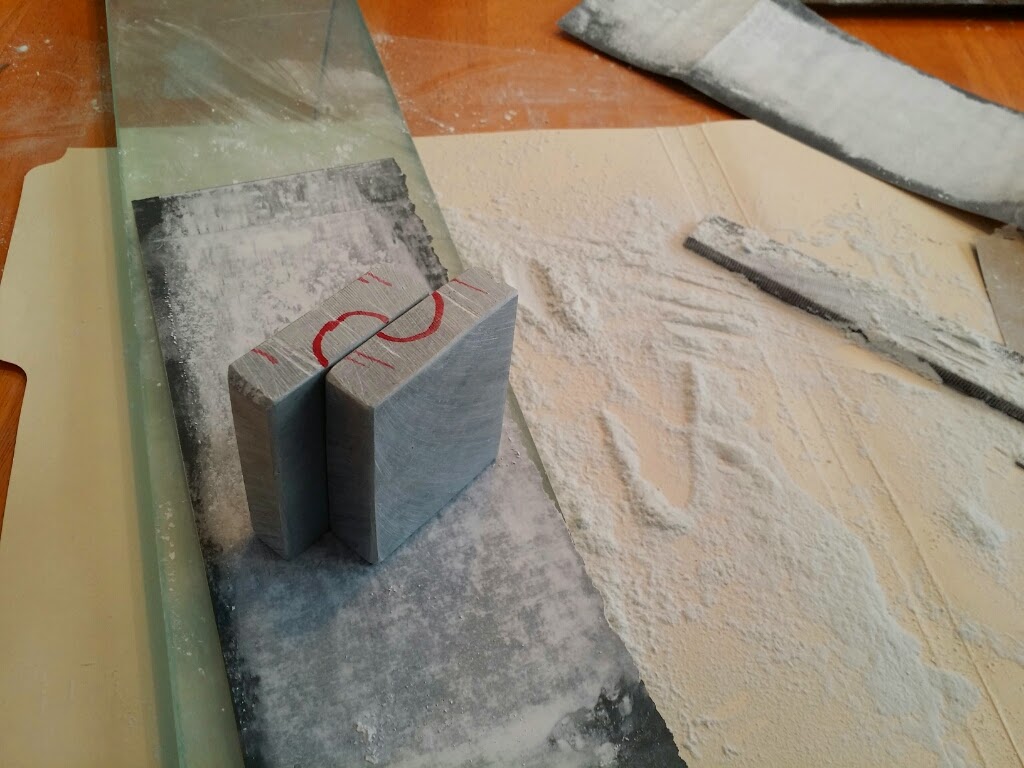Concept: Small and thin to minimize use of metal. My heraldic device on a shield shaped token about the size of a dime. I was hoping to make the object very thin. I find that carving stone to make a very thin item is more difficult that a thick item. When the item is thin it takes longer to perfect the mold to get a good flow of molten metal. I thought that a thin yet crisply designed image would make the piece stand out more.
Sliced chunks of stone were sanded smooth. I used a piece of glass and progressively finer grit sand paper to get a reasonably smooth surface. When the two slices of stone are squeezed together and held up to the light little or no light makes it's way through the crack. Ready for the design.
I traced the size of the stone on to a piece of paper and then roughly sketched my device. Details aren't important at this point. I just wanted to hold it at arm's length and see if it looked about the right size. After the shape and sizer were OK I cut it out and traced the shield on to the stone.
Mark & Erica working on their first stone carving.
I sketched an idea for the sprue size and then didn't actually use it. :-(
I decided to carve the device on one stone and the sprue on only the back. I was hoping that in the future I might use that same device on other casting projects. Having the sprue cut on to the face of that piece might pose a problem for future castings. I tried to make the sprue on the back large enough that exact alignment wasn't as critical. My hope was that I wouldn't need register pins if the sprue wasn't only on the back. I could eyeball them and simply hold them together with my hand while casting.
Some initial versions. Took about 30 pours before the stone was warm enough to allow a good even flow. These pieces are roughly about 1/2 the thickness of an American dime. Once I got a good flow I then proceeded to clean up the shape of the shield and smooth out the front as much as possible.
As I worked through getting a smooth face I kept performing test pours to see if the thickness would be a problem. You can see here that the flow of the metal was leaving a stream line down the middle. I cut a few vents on the side of the stone and that helped a little. We were using a new electric pot as well. Flow from the pot was not always even and I think that the metal was not always an even temperature.
After playing with the temp I was able to get a better more even pour. The face was cleaned up enough at this point so after this piece I proceeded to move on to cleaning up the edges and beginning the shape of my device.
You can see the stone where I ended for the day. The badge is quartered. Again it took about 30 pours before I was able to begin getting a good clean face. I am very happy with the size and thickness of the token so far. Had to call it a day at this point though. I will start off the next step adding my three doves to the mix as depicted on my device at the top of the blog.













